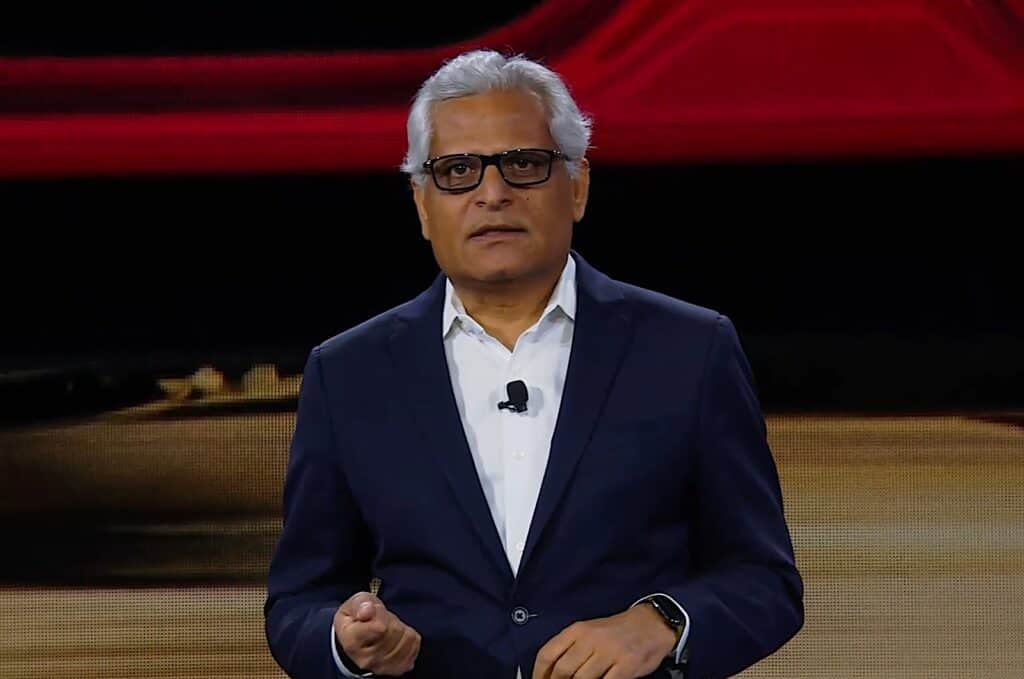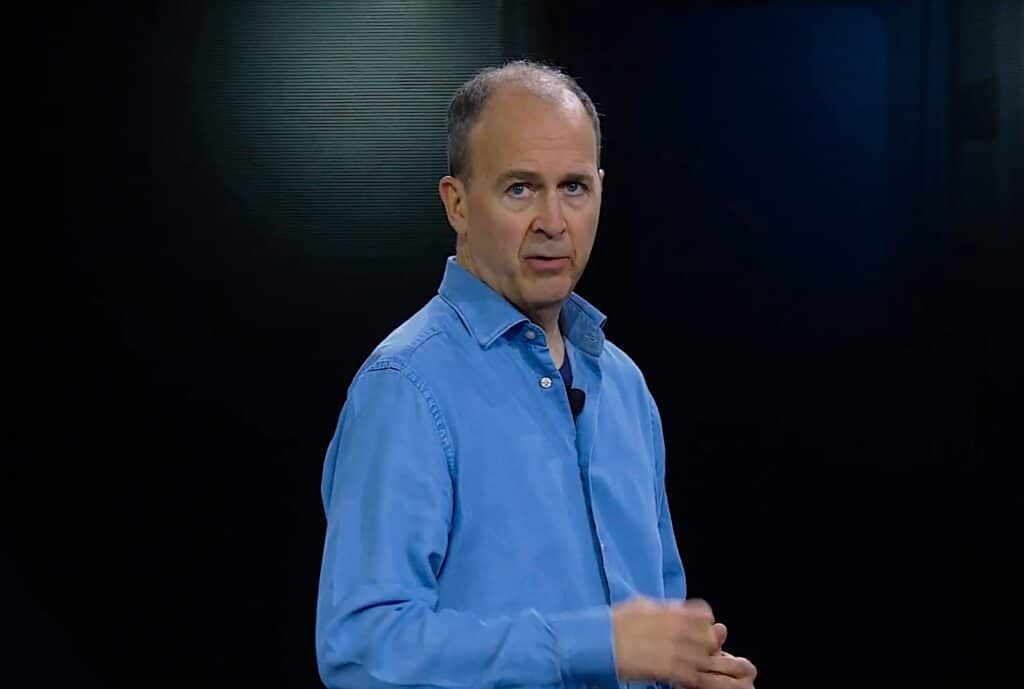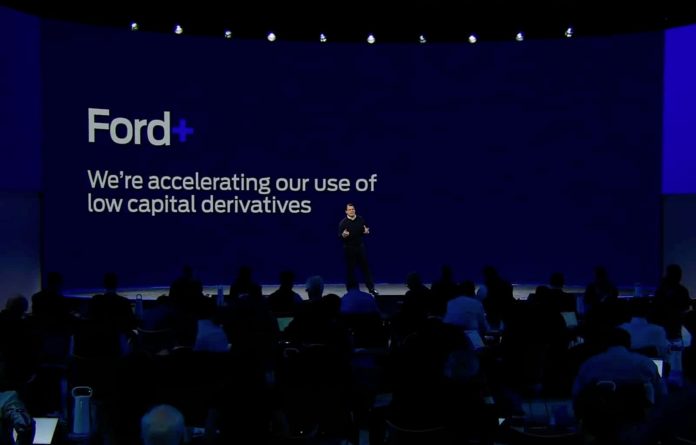The three new business units Ford Motor Co. established to manage the transition to electric vehicles are expected reduce costs by as much as $7 billion while creating added revenue streams by offering new products and services.
“We intend to create unprecedented value,” Ford CEO Jim Farley told analysts during “Investors Day” at Ford headquarters in Dearborn. “Ultimately the company has to be cost competitive with the best,” he added during question-and-answer session.
“The days of being all things to all people are over at Ford,” added Farley, who donned a sweater like former FCA CEO Sergio Marchionne for the meeting with investors.
Ford sharpens customer focus
“We’re developing and delivering connected, digital products that give customers tailored ownership experiences — opening up diverse revenue pools and unprecedented growth for us instead of jockeying for slivers of share with complex hardware in over-served vehicle categories.”
Farley said Ford is “competing differently” and placing “big bets” through each of its three, customer-centered business segments: Ford Blue, Ford Model e and Ford Pro.
Ford has fresh, in-demand products and ambitious objectives for profitable growth for each of the businesses, which are making decisions — including about how to allocate capital — based on the specific needs of their different customers, Farley said.
“We want to give customers services and experiences they can’t live without — including things we haven’t yet imagined,” said Farley, who also emphasized the company is focusing on trimming costs in ensure Ford is more competitive.

Kumar Galhotra, president of Ford Blue, which encompasses Ford’s traditional vehicle assembly business, described the unit as an industrial power capable of producing double-digit returns by the end of 2026.
“We’re the number one selling pickup truck in the world,” added Galhotra, who said vehicles with hybrids and internal combustion engines will remain part of Ford’s product portfolio well into the next decade.
Ford aims to cut cost in traditional and EV business
Galhotra also emphasized Ford also working to trim $7 billion from its operating costs. “We are attacking waste,” he added. “We have some chronically underperforming tier-one suppliers,” he said. “If the present supplier isn’t improving, we’ll resource the business,” Galhotra said, adding the push to reduce cost an emphasis on improving quality.
Demand for Ford Blue products outstrips Ford Blue’s current capacity, which is racing to increase capacity by 160% with the emphasis on higher margin vehicles. Ford Blue’s strategy is built around improving capital efficiency by building derivatives, such as F-150 Raptor, off its base vehicles.
While the derivatives share 80% of the parts with the base vehicle, they are not commoditized and have serious pricing power, Galhotra added.
Lisa Drake, the vice president in charge EV industrialization, said Ford Model e also is included in Ford’s efforts to reduce costs. The BlueOval City facility now under construction near Memphis, Tennessee will have an automated body shop, an efficient paint shop with a smaller footprint and will operate with 30% of the labor and overhead of one the assembly plants building Ford’s traditional pickup trucks, said Drake.

Additionally, Ford is targeting the costs of the batteries needed to drive electric vehicles by signing deals with suppliers of nickel and Lithium. Ford’s new gigafactory in Michigan is expected to build the least expensive batteries in the industry with its lithium iron phosphate chemistry.
Drake said Ford Model e’s growth expectations include a production capacity run-rate of
2 million EVs by the end of 2026 and beyond.
Ford: The Next Generation
“Our Gen Two products will be like something no one has ever seen,” said Doug Field, the chief of advance product development, who is responsible for the electric vehicles and software, which will define Ford’s products and services in the future.
The new software platform Ford has under development will be available by 2025 and serve as the underpinning for the electric pickup truck and a new seven passenger utility vehicle that will bring new levels of comfort, technology and safety, Field added.
Software also can help guide vehicles through assembly plants, deliver new services to customers and create new streams of revenue, Ford executives noted during the presentations.
Ford Pro, the company’s commercial arm, already holds major edge over its competitors, noted Ford Pro CEO Ted Cannis. In the short term, Ford’s goal is “widen the moat,” making it more difficult for challengers to dent Ford Pro’s dominance.
“With the customer-centered business segments fully stood up, we’re taking giant leaps forward with big implications for how we compete and create value over the long haul,” Lawler said.
Lawler said Ford is targeting adjusted earnings before interest and taxes margin of 10% in 2026, calling it “a waypoint” to higher subsequent profitability. He also said the 2026 EBIT margin targets for Ford Blue is in the “low” double digits, in the mid-teens for Ford Pro, and 8% for Ford Model e by 2026 as Ford continues to adjust it strategy.
“Trying to be all things to all customers isn’t a great business model,” Lawler added.

